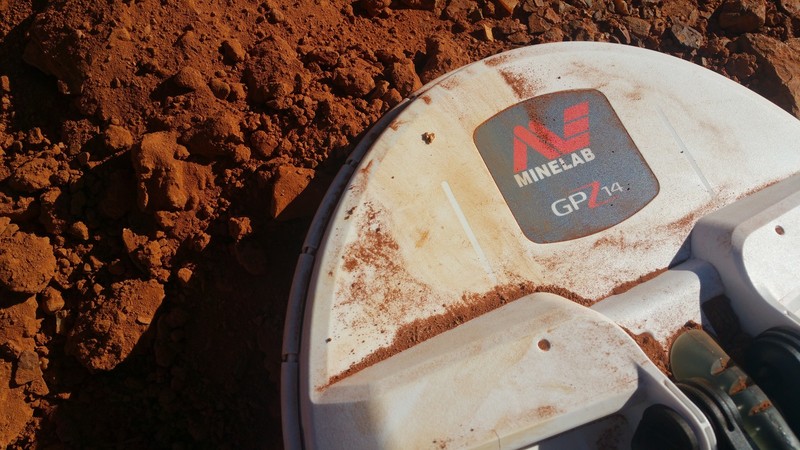Leaderboard
Popular Content
Showing content with the highest reputation on 06/21/2018 in all areas
-
I called Minelab USA this morning asking about the 6" coil, the rep informed me that the 6" coil will be shipping out next week. Now, I didn't ask if that was from Australia or from Minelab USA to the distributors. It looks like the coil will finally be available very soon.10 points
-
These tips are based on my personal use of the Minelab Equinox 800 at a few locations in Nevada and California. That means you have to take this with a grain of salt for other locations as far as exact settings but the basic process is the same. I will probably update this in the future as I learn more, including hopefully any observations and tips people may provide on this thread. The Gold Mode is only available on the Equinox 800 and features a VCO boosted audio that is quite different than the other Equinox modes. It is very powerful, especially in Multi frequency, and will detect very tiny pieces of gold. The downside is that in highly mineralized ground you will encounter hot rocks and even the ground itself that wants to react and create signals. The basic secret of nugget detecting with a VLF detector is in tuning the detector for the best performance possible, while accepting that air test type results are not possible in bad ground. A balance must be obtained between sheer power (sensitivity) and the false signals generated in difficult ground. The key default settings for Gold Mode 1 are: Frequency: Multi Ground Balance: Tracking Sensitivity: 20 Recovery Speed: 6 Iron Bias: 6 Accept/Reject: -9 through 0 rejected, 1 through 40 accepted When I hit new ground when nugget detecting I want my detector to be running with manual adjustments. Initially knowing how the ground responds is very important and I want to make any settings that affect anything myself. Therefore, the first thing I do is turn off the ground tracking and use the Auto (pump coil over ground) method of ground balancing instead. Ground tracking can also track out faint nugget signals, so my preference is to run with it off if possible. Frankly, I have not experimented with Iron Bias much. In theory at least reducing this setting will reduce the possibility of tiny gold being misidentified as ferrous. Since I am mistrustful of filters I have been running the Iron Bias at 0. Starting out however people may want to leave it alone since adjusting too many things at once may not be productive for beginners. Recovery Speed is highly misunderstood. People latch onto one out of context statement "lower recovery speed equals more depth" and too many people therefore are immediately going to lower settings. Higher recovery speeds allow the detector to better separate trash targets from good and minimises any masking effects. "Masking" is where bad targets overwhelm and hide good targets. Mineralized "hot rocks" are really nothing more than a large target that can mask (hide) nuggets not just under but next to them. Reducing the recovery speed will often add no depth due to ground conditions, and mask nuggets next to hot rocks. Higher recovery speeds will reveal those nuggets, and so you are often getting more "relative depth" with higher recovery speed settings. I basically stick with the default setting of 6 and will not go lower unless the ground is relatively low mineral and free of hot rocks. Most importantly, in some ground you will find that the coil will tend to give false signals when bumped. This is directly affected by Recovery Speed. Going to lower recovery speeds will generate more false signals due to bumping on rocks. With all that said however, reducing the Recovery Speed can add extra sensitivity to very deep or very small targets. A setting of 4 is easily manageable in low mineral ground and can work for the Equinox in higher mineral ground with a skilled operator. It is possible to go even lower though the detector will typically become less stable at the slower recovery speed settings. Sensitivity is one of those “set it as high as you can without making the detector too unstable” type settings. My settings normally range from 18 to 25 but could go lower in bad ground. Now, the extremely important Accept/Reject settings. Weak gold signals in highly mineralized ground will definitely run into the ferrous range. Starting out, I am going to toggle the Horseshoe button to remove all rejected settings so that the detector reacts to everything. My starting point for Gold Mode 1: Frequency: Multi Ground Balance: Auto (pump method) Sensitivity: 20 Recovery Speed: 6 Iron Bias: 0 Accept/Reject: -9 through 40 accepted The first thing I want to do is see how the ground responds with these settings. Find a place hopefully free of trash, and run the coil over the ground and observe what happens. In most gold locations you should see lots of target responses at -9 and -8 plus possibly -7. These are ground responses and are giving you direct feedback on your settings. The first thing I want to try and do is reduce those ground responses as much as possible by employing a mix of ground balance, sensitivity, and recovery speed. Simply ground balancing should cause those signals to alleviate somewhat. You will want to note hot rock readings especially. The ground will balance out (ground noise reduce) at one ground balance setting, but it may make some hot rocks worse. Sometimes you can manually tweak the ground balance to also reduce the hot rock response while not really making the ground itself worse by trying intermediate settings. You can only do this when not in tracking since tracking decides for you where the settings will be. I always will stay in manual until forced to use tracking for this reason alone. Reducing sensitivity is also a good thing to do in many cases, yet people are very resistant to doing so for fear of losing depth. The thing is, unless you can get the detector to settle down and run relatively smoothly you will struggle with hot rocks and false signals. Reducing sensitivity will reduce hot rock signals faster than it will reduce metal signals in most cases, so back it down as needed to get stable performance. If the ground is mild enough you should be able to find settings that reduce or eliminate the readings in the -9, -8, and -7 ground range, plus hopefully alleviating any hot rocks that are present. However, in very bad ground you may still have a lot of signals in that region. If so, try a couple things. First, go ahead and try out the tracking. Tracking has an advantage in that it will typically tune out a hot rock in a single swing or two, while being extremely resistant to tuning out metal objects. If you can get smoother performance over the ground than with any reasonable manual settings, it may be the way to go. In the worst ground and hot rocks the magic ability to switch frequencies can be a serious aid. I have found that Multi is very powerful... more powerful than any single frequency. That does mean that by simply going to 20 khz a lot of ground and hot rocks that are noisy in Multi settle down and become manageable. One of these options may allow you to go detecting without rejecting any target id numbers. That would be ideal. However, do not be surprised if residual signals remain in the -9, -8, and -7 region. If they are still too prevalent, then hit the Horseshoe button again to engage the Accept/Reject function, but go in and open up everything except the offending signals. That for me commonly means blocking -9, -8, and -7 but accepting -6 and higher. Or maybe you need to block -6 also. You have to listen to what the detector is telling you and adjust accordingly. If you do end up blocking out some low negative numbers you may find you can also bump the sensitivity back up a point or two as long as everything stays quiet. Again, the goal is to try and shut down ground and hot rock responses to the greatest degree possible while retaining as much detecting power as possible. It's a balancing act. Tiny nuggets will often read as solid hits at target id 1 and 2. The larger the gold, the higher the target id reading. Gold can appear anywhere on the meter all the way up into the 30's if the nugget is large enough. I have not had it happen yet but be very suspicious of 0 and -1 readings as also being possible gold readings.* This is just an example of where I end up at on my ground a lot so far: Gold Mode 1 Frequency: Multi Ground Balance: Auto (Ground pump method) Sensitivity: 18 - 23 Recovery Speed: 4 - 6 Iron Bias: 0 Accept/Reject: -9 through -7 rejected, -6 through 40 accepted Note: the following works as well on both Equinox 600 and Equinox 800. Since Gold Mode lacks target tones, going to Park 2 and using the solutions above plus the additional possibility of tones is another alternative. Instead of using Gold Mode and blocking the lowest target id numbers they can be left open to signal as ferrous or mixed ferrous targets. And you now have 5, 10, and 15 kHz options that Gold Mode lacks. Park 2 set up properly is quite close to Gold Mode performance and a perfectly acceptable nugget detecting alternative, and actually superior for some situations. You may also use Field 2 as a starting point. Be very careful however because the default rejection pattern for Field 2 rejects target id 1 and 2. This will reject most small gold nugget readings and reduce signal strength on larger gold by blocking part of the signal. I therefore recommend Park 2 to avoid this possibly fatal error. For Park Mode 2: Frequency: Multi Ground Balance: Auto (Ground pump method with manual tweaking) Sensitivity: 16 – 25 Recovery Speed 800: 4 - 6 (default is 6) Recovery Speed 600: 2 - 3 (default is 3) Iron Bias: 0 Accept/Reject: Everything accepted, rely on tones (alternative reject -9, -8, and -7 if too much ground feedback) In closing, I want to say that gold nugget detecting demands far more expertise from the operator than most detecting. People who rely on canned settings provided by others will never be expert unless they really understand what the settings are doing. It is imperative that you be able to observe ground responses as I have noted above, and know how to best alleviate them while losing as little depth on gold as possible. It is a very fine balancing point done correctly and can only be done properly by a person who genuinely understands how the detector operates. The only way I know to become proficient is lots of experimenting in the field with different settings on test targets and hot rocks. The settings above are less important than the methodology, and if you want to truly become a proficient nugget hunter you do need to work at it. I hope that helps somebody out - best of luck to you! Updated Nugget Detecting Tips 9/2018 *This article recommends keeping as many negative numbers set to accept as is possible. It has been confirmed that as I suspected that nuggets range well into the negative numbers. First gold nuggets found with Minelab Equinox from Jonathan Porter report...4 points
-
You hit the nail on the head. The Nox has great tonal qaulities. Iffy sounding targets are usually junk. I mentioned a while back that I am rarely ever surprised by an iffy signal being a good target. Where as, I was often surprised by iffy signals on other machines being good targets. Clive describes this very well in his book. As you use the Nox more, and trust what it is telling you, your treasure to trash ratio really improves. I believe that the guys who purchased the Nox and then sold it soon after claiming that they were digging more junk than ever didn't spend enough time learning what it was telling them. It's tones are very descriptive. Dean3 points
-
Where Do I Begin? by Ron Wendt You’ve developed an interest in prospecting for gold. A couple friends have told you how much fun they’ve had looking for gold. In this article I’ll point out the pros and cons about this activity and in the end you’ll probably have decided to what degree you want to pursue your search for gold. To begin with, it must be pointed out, there are several types of prospectors: 1 - Those who wish to dig right in as a recreational prospector. 2 - One who is serious about learning about the finer aspects of geology related to precious metals and would pursue possibly developing potential income from this endeavor. 3 - A hardcore, hand miner “give me a bulldozer, I wanna gamble.” Of course mining can be a gamble and the biggest mistake some folks make is getting too serious about it. Many times most of the fun goes right out the window when it becomes serious. What happens is the deep desire for gold becomes elusive and discouragement sets in when there are no results. Looking for gold can be hard work with few rewards. Years ago an old timer once told me; “the fellows that got rich during the gold rush were just plain lucky!” Napoleon once said that too: “I want good generals, but I also want lucky ones!” Yes, there is a lot of luck in this business. The old timer and Napoleon were right. A lot of it is luck, but a lot of it is hard work to. You can choose to enjoy it with a little reward or to not enjoy it with little reward. The truth is the odds are you won’t get rich, but you might get lucky! We all know about luck. You can go to the gambling hall and pull on the “one armed bandit,” all day and not make a dime. Such is mining and prospecting. I’ve been lucky and I’ve been unlucky. I’ve been rich and I’ve been poor. I like rich better, and I like getting lucky. Shoveling gold bearing dirt into power sluices To be a prospector you must be willing to take a risk to a certain degree. There are those who think they can go out and simply put their shovel into the ground and there it is! They believe they’ll strike it rich. I have known some who have struck it big their first few times out. They didn’t have a clue, but were in the right place at the right time. There are several things in your character you should be aware of. 1 - You should be the type of person not easily discouraged. 2 - You should not be afraid of getting dirty and not afraid of hard work. 3 - You should have a keen interest in exploring, prospecting things that are related in this field because it is all connected. 4 - Be frugal. Don’t mortgage the farm. It doesn’t take much in the way of investment to get into this “field of study,” as I call it. 5 - You should not be afraid to get wet, camp out, or endure the elements. 6 - Attitude is a major in this business of mining/prospecting. This probably goes along with “don’t be easily discouraged.” 7 - Don’t be afraid to fail. Failure is a great learning experience. 8 - Have some curiosity about what could be over the next hill or under the next rock. 9 - Be optimistic. If you’re not, you probably shouldn’t be in this business. 10 - Most of all enjoy it. Enjoy it even though you don’t get rich from it. Your reward is experience and experiences many will never have the opportunity to do. Where do I begin? First off don’t go out and buy a bulldozer, when a gold pan can simply do the trick. In other words, start out learning the basics. Those basics are the gold pan, pick, shovel, sluice box, and perhaps a sniffer bottle to suck up gold from cracks. It would be good to go along with a veteran, not only to see how it’s done but to see if you like it. I have seen many times where folks will go out and buy a $1,500 suction dredge only to sell it the next year because they probably got discouraged, when a gold pan and hand tools would have sufficed. A big majority of prospectors I know will tell you they started out small, by that I mean, small mining tools which would include sluices, gold pans, picks and shovels. Once you decide you will make prospecting your side line, one can eventually branch out into other methods. Dredging for gold There are some who will head out into the world of nugget detecting. Here’s something to think about. When you spend $600 to $1,000 on a brand name detector, before you even make a decision to buy it, ask yourself this; “Where will I use it?” This may seem like a funny question, but in Alaska and the Yukon Territory, we may have a lot of gold scattered around up here, but is it detectable and accessible? Will I be able to drive somewhere during my time off from my regular job and spend enough time detecting nuggets? Is there a location close by where gold is detectable? Am I willing to invest this kind of money to use this machine in a proven area? There’s nothing worse than buying a piece of mining equipment and not be able to get into areas that are productive. For instance, the mountains behind my house generally yields mostly fine gold and some hardrock gold. For me to get any bigger gold I must travel south of my house about two hours down the highway or 5 to 10 hours to the north to get into productive ground. I am willing to spend times going to my favorite remote spots in search of gold. So you must determine how much am I willing to put into this to get results? It’s the same with going from your gold pan/sluice operation to a high banker or a suction dredge. Are you planning on a few choice trips to areas to get results, which by the way aren’t guaranteed? My recommendation is build up your knowledge of prospecting over 2 or 3 years before investing in bigger toys. This way once you’ve established a good, possible gold source, you might feel it’s now time to go for higher production. Large scale industrial miners work in much the same way. I have a good friend who suction dredged for a few years on a creek. After taking out numerous ounces of gold, he made a decision to go bigger. From there he bought a small D-6Cat to feed a sluice box, then eventually he added a backhoe. Today he has a D-9, a bigger backhoe and a dragline. He’s been seriously at it for over 25 years. In the off season he has another job to support his “sickness” called “gold fever.” Gold found by a prospector I’ve met a few folks who complained: “Yeah, I went out for a couple hours, and didn’t get a thing. There’s nothing out there!” He immediately was very skeptical there was any gold at all out there.” I said that was fine. There’ll be more for the rest of us! I told this fellow, a couple hours does not do the trick. You have to work at it. It won’t jump up into your pan, and no one will tell you exactly where it is because they don’t know themselves where it is exactly. We have an idea, but we can’t always pin point it. Most of the time we walk right over it. I remember an old prospector from up on the Yukon River was once asked where he kept all his gold, to which he replied; “Its in a safe place in the creek!” He knew he could dig it out anytime he wanted to, but he had to make the effort. No one would get it for him. He took out enough gold to survive on most of his life. It was his lifestyle and sole occupation. Finally, recapping everything, I can’t stress enough: 1 - Start small, then gradually increase your devices to accommodate your potential production. You might advance from a sluice/gold pan to a nugget detector. You might eventually obtain all the tools of the trade, short of buying a bull dozer. The bull dozer purchase would probably indicate you’re pretty serious or you’ve got money to blow! 2 - Enjoy this endeavor. If you don’t enjoy it, get out of the business. You probably should not have gotten into it. 3 - There’s no room for discouragement. If you’re easily disappointed then prospecting is probably not for you. 4 - Expect to work hard at it. Be patient. Patience is a virtue. You will put in time of no rewards, but when they come, it’s worth it all. 5 - Don’t get greedy. If you hit it big, a few ounces here and there or bigger, consider it your much deserved reward. 6 - Don’t mortgage the farm. Never, never do this! I’ve known miners to put all their eggs in one basket and they all cracked! Unless you like living in tents on the edge of town, never gamble with your stability. 7 - Enjoy prospecting. Its one of the most fascinating occupations I can think of. What better way to enjoy the outdoors, splash around in cold water on hot days, explore old ghost towns, collect rocks, view big game, there are folks that would give their right arm to do this. A word of encouragement to those in search of gold: Practice patience, be optimistic. Always learn from your mistakes and always keep enough bug dope in your pack! by Ron Wendt 2005 Note from Steve Herschbach - Ron was a dear friend who left this world too soon. He donated this article for use on the website not too long before his health finally failed. We all miss you Ron! R.I.P. Ron Wendt 1956 - 2007 From the obituary: Ron Wendt was born April 24, 1956, in Fairbanks, in the Territory of Alaska. He was raised on his family’s homestead on Chena Hot Springs Road outside of Fairbanks and his father’s mining claims in the Circle gold fields. He developed an early interest in Alaska history by exploring ghost towns and mining camps and talking with old-timers from the gold rush era. Ron worked as a gold miner, newspaper reporter, photographer, college instructor, construction worker and custodian before starting his own publishing business, Goldstream Publications, in Wasilla. He wrote about gold rush history, modern day mining and prospecting, and many tales of Alaska. He was a member of the Alaska Miners Association, an avid baseball fan and loved to travel the roads of Alaska with his wife, Bonnie.2 points
-
2 points
-
Last night I detected under a tree in a rain storm and still found a 1919 wheatie and today I used the Field 2 program with 5 tones, sweep speed 1, sensitivity 23, and horseshoe mode to find 2 IHs and what looks to be a counterfeit quarter. The settings found the pennies @ 9+" I also used the CGTime Golden Plated 3.5mm MONO 1/8 inch Audio Male to 6.35mm 1/4 inch Female Jack Converter Cable Cord Adapter (25CM/10Inch) to connect my more comfortable headphones.2 points
-
Take it with a grain of salt, a Minelab USA rep told us in April that they would be shipping in a couple of weeks.....that was a couple of months ago ?2 points
-
The White's PulseScan TDI was released in 2008 and is still in production as the TDI SL. Prior versions have been discontinued. I was one of the original users of the TDI and still dabble with them to this day. See my story White's TDI at Moore Creek, Alaska for pictures of lots of TDI gold nugget finds. I also have extensive notes on using the TDI for coin detecting at Steve's Guide to White's TDI Coin Settings. The TDI is a unique detector and is seeing use in many applications unforeseen when it first came out. The TDI has been available in several versions but all are basically the same detector as far as how they work. October 2019 Note: White's has a model called the TDI Hi-Q, which is a TDI SL with straight rod, new coil, and tan or camo paint job. See the details here. I am a big fan of competition as I always want more and better detectors from the manufacturers personally, and I think competition is the best way to get better detectors. After Garrett got into the ground balancing pulse induction (GBPI) game with the Infinium people including myself were really after White's to make an entry into the field. I went so far as to visit White's Electronics personally to lobby for such a detector with suggestions on how to get there. Alan Holcomb, the CEO at that time, flew me down at White's expense for discussions on how to proceed with such a project. In particular, I advised that rather than developing something from scratch, it might make more sense to license the existing Goldscan technology from Eric Foster, widely known as "the father of pulse technology" for his early work in the field. Eventually White's did decide to pursue the matter, and I was therefore aware early on that White's was working on a new detector, In 2007 I was sent a prototype unit to evaluate while I was on vacation in Hawaii. I was very impressed not only with the power of the detector but more importantly for me in Hawaii I was very impressed with how stable the detector was in salt water. It was also virtually immune to electromagnetic interference (EMI) issues that had dogged my use of other detectors in Hawaii. White's TDI SL with closeup of control panel (compare to original TDI controls below) My use of previous GBPI detectors, the Minelab models and the Garrett Infinium, made me familiar with how they respond to targets with various tones. Each target generates a dual tone that varies depending on whether the target is above or below the ground balance point that has been set. You will hear either a high tone followed immediately by a low tone (hi-lo), or a low tone followed immediately by a high tone (lo-hi). This dual tone system is effective for most uses but if you get into a target rich location it in effect doubles the number of audio signals coming from the detector. I also had an opportunity in Alaska to visit with Brent Weaver, the main engineer at Garrett responsible for the development of the Infinium. While testing a prototype Infinium I asked him about the dual tones (Garrett now refers to them as "echos") and whether they could be suppressed. He told me the dual tones were integral in how the Infinium worked and that it was not practical to produce a single tone result on the circuit they were working with. White's did end up working with Eric Foster on the development of the TDI. His method is one I like because instead of the dual tone responses generated by the Minelab and Garrett models (hi-lo or lo-hi) the TDI generates one of two tones, either a low tone, or a high tone. The tone depends on whether the target is above or below the current ground balance setting, and therefore there is only a tone difference when the ground balance system is engaged. The ground balance off, straight PI mode has monotone responses. Also, because the ground balance can be set manually on the TDI, this tone "breakpoint" can be shifted by the operator. This allows targets to be separated broadly into two distinct groups. On one hand there are high conductor type targets, like most coins and large steel items, that on the TDI produce a low tone response. The other group is comprised of low conductor type targets, and includes most gold items, US nickels, aluminum, and small ferrous trash. These all produce a high tone response on the TDI. There are far more high tone targets than low tone targets in most locations. I really liked the prototype TDI that I used in Hawaii, in particular the fact that it generated half the audio responses compared to a Garrett or a Minelab. Once again I wondered if one tone or the other could be suppressed. I sent an email to Eric Foster, and was surprised when he told me that not only could it be done, but it would be a very simple thing to implement with a basic toggle switch arrangement. This came about very late in the TDI development, and I lobbied hard for just such a feature to be added. A last second vote was taken by those involved, and probably the last major change on the TDI before it went into production was the Target Conductivity switch. There was no such switch on the tan prototype models. Prototype White's TDI Used by Steve Herschbach in Hawaii Now, I do not want to give the impression I was some kind of major player in the development of the TDI. I was just one of many voices pushing at White's for years to develop a ground balancing pulse induction (GBPI) detector. I am pretty sure though my last second inquiry and little push was what made the tipping point to getting the Target Conductivity switch included, and I think to this day it is one of the most useful and intriguing features on the TDI. It allows for a vast reduction in the number of audio responses in certain situations and in conjunction with the manual ground balance and pulse delay offers a degree of discrimination on the TDI not seen on any other pulse induction detector made today. This makes the TDI a pulse induction machine that can be used effectively for coin detecting, if the operator knows what they are doing and employs some smarts in site selection. I wrote an article entitled Steve's Guide to White's TDI Coin Settings on this very subject. I will not repeat the information here in the interest of keeping this page from getting too long so check out the link. Suffice it to say the TDI has the ability to play tricks and discern targets far beyond what most PI detectors can achieve. Another major feature on the TDI is the ability for the ground balance system to be shut off. The method used to ground balance the TDI in effect subtracts the ground reading from the total readings returned by the detector. This subtractive method does actually steal some depth, which is easily shown in air tests on targets with the ground balance turned on and the ground balance turned off. The closer the target is in relation to the ground balance setting, the more depth is lost. People find this very confusing, as the whole point of ground balancing a PI is to get better depth, right? Original White's TDI Control Panel The way it works is this. In low mineral ground a PI gets maximum depth without using any ground balancing. However, as mineralization increases, depth is affected. The more mineralization, the more depth is lost. Also, ground effects increase. In low mineral ground, the coil may be raised off the ground with little response. In highly mineralized ground, raising the coil even slightly off the ground produces a false signal. Nearly all PI detectors have an audio retune circuit that slowly retunes the audio response to keep it at the set threshold level. Otherwise circuit drift and minor ground variances would require constant retuning. In high mineral ground, the ground produces a response, but the detector compensates as long as the coil is kept at an exact height over or on the ground. If the coil is raised quickly, the audio overshoots when the ground signal is removed and a false signal occurs. This can be a real problem in even ground or in the water where it is difficult to maintain a steady distance above the ground or sea bottom. Hot rocks or wildly varying ground mineralization present an even greater issue. Again, the detector does well as long as the conditions are constant, but when a hot rock or mineralized ground condition like a clay seam enter the picture, a false signal is heard. In areas with lots of hot rocks PI detectors that cannot ground balance are almost useless due to the overwhelming number of false signals. So imagine a PI with no ground balance in low mineral soil. All is well, maximum depth is achieved. Pretend we have the ability via a magic dial to turn up the ground minerals and/or hot rocks in the ground. A point is reached where performance and efficiency is greatly impacted. It becomes impossible to discern good targets from ground signals and false hot rock signals. At such a point, engaging the ground balance circuit gains back the lost performance and efficiency. It does this by eliminating the ground signal and hot rock signals. White's search coils for TDI (from 2018 product catalog) This leads to situations occurring where people use a GBPI detector in low mineral ground and decide they are no better than a VLF. That actually often is true, in that a good VLF in all metal mode will do about as well as a Ground Balancing PI in low mineral ground, if both have similar coil sizes. A GBPI does not come into its own until the ground conditions or hot rocks are such that a VLF operator wants to toss the detector in a gully in frustration. This has been a very long lead explanation to the TDI secret weapon. In low mineral ground, turn the ground balance off! The detector will become extremely stable with a very smooth threshold and become more resistant to electrical interference. Gain may be boosted and a great deal of extra depth achieved in situations that allow for this type of operation, and they are actually very common. This would be the preferred beach mode on most beaches, the exception being beaches with a lot of black sands. The White's TDI in pure PI mode is one of the most powerful straight PI detectors available. The tone differences between targets disappear, and sometimes the ability to differentiate targets is more important than the depth gained by shutting the ground balance system off. But do not overlook this ability to run without ground balance in situations that warrant doing just that as it can really pay dividends to the knowledgeable operator. In 2018 White's responded to long standing demand from customers and released a version of the TDI that is waterproof to 25 feet - the TDI Beachhunter. This is basically a TDI SL in a Beachhunter ID control box. The model weighs more at 5.2 lbs for obvious reasons. The TDI Beachhunter has all the same controls as the TDI SL with the exception of the conductivity switch. This means the TDI Beachhunter signals on all targets, but the dual tone scheme remains to allow the operator to differentiate targets by the sounds. In order to help insure waterproof integrity the coil on the TDI Beachhunter (12" Dual Field coil) has been hardwired into the control box. Forum thread with more information on TDI Beachhunter. White's Electronics TDI Beachhunter - new for 2018 ~ Steve Herschbach Copyright © 2010 Herschbach Enterprises Official White's TDI SL Page White's TDI SL Data & Reviews White's TDI SL Instruction Manual White's TDI SL Special Edition Data & Reviews White's TDI BeachHunter Data & Reviews White's TDI Pro Instruction Manual White's Original TDI Instruction Manual White's TDI Field Manual Forum Threads Tagged "whites tdi" White's Metal Detector Forum Great Post on Batteries For the TDI SL White's TDI Coin Settings Some Commentary On TDI Tuning & Discrimination White's TDI Technical Specifications* Internet Price TDI SL $1189 (Special Edition $1049) (Beachhunter $1199) Technology Ground Balancing Pulse Induction (GBPI) Frequency 3250 - 3370 Pulses Per Second Autotune Mode(s) Slow Motion Ground Rejection Manual, one turn control Soil Adjust Ground Balance On or Off (two position switch) Discrimination Conductivity switch*, 10 - 25 Pulse Delay Volume Control No Threshold Control One turn control Tone Adjust No Audio Boost No Frequency Offset One turn control Pinpoint Mode No Audio Output Speaker, 1/4" headphone socket Hip Mount No (TDI Beachhunter - Yes) Standard Coil(s) 12" Round Dual Field Optional Search Coils Over 100 accessory coils available (TDI Beachhunter has hardwired coil) Battery Rechargeable NiMH & AA Operating Time Up to 6 hours Weight TDI SL 3.5 pounds ( TDI Beachhunter 5.2 lbs) Additional Technology The TDI was designed specifically to be able to use Minelab SD/GP compatible coils. However, performance can vary and the pulse delay may have to be advanced to compensate for coil differences that result in overload readings. TDI Beachhunter is waterproof to 25 feet. Notes *The TDI is unique in that it can suppress audio responses into two different classes. Targets have a high tone or low tone audio depending on how the target relates to the ground balance setting. In general high conductive targets give a low tone and low conductive targets a high tone. The TDI can be set to allow for one response or the other. See White's TDI Coin Settings for more details on this control. *Notes on Technical Specifications - Detailed notes about the specifications listed in this chart. White's TDI SL High-Q Tan metal detector1 point
-
When Minelab started developing our EQUINOX detector, we looked very closely at all of the current market offerings (including our own) to reassess what detectorists were really after in a new coin & treasure detector. A clear short list of desirable features quickly emerged – and no real surprises here – waterproof, lightweight, low-cost, wireless audio, and of course, improved performance from new technology. This came from not only our own observations, but also customers, field testers, dealers and the metal detecting forums that many detectorists contribute to. While we could have taken the approach of putting the X-TERRA (VFLEX technology) in a waterproof housing and adding a selectable frequency range, this would have been following the path of many of our competitors in just rehashing an older single frequency technology that had already reached its performance limits. Another option would have been to create a lower cost waterproof FBS detector, but that also had its challenges with FBS being ‘power hungry’, needing heavier batteries, heavier coils, etc., and relatively high cost compared to the more recent advances that our R&D team have been making with the latest electronics hardware and signal processing techniques. When Minelab develop a new detecting technology we aim to create a paradigm shift from existing products and provide a clear performance advantage for our customers. Our Technology History The multi-frequency broad band spectrum (BBS) technology that first appeared in Sovereign detectors in the early 1990’s provided an advantage over single frequency coin & treasure detectors. This evolved into FBS with Explorer, all the way through to the current CTX 3030 (FBS 2). The multi-period sensing (MPS) PI technology that first appeared in the SD 2000 detector in the mid 1990’s gave a significant advantage over single frequency gold detectors. This key technology exists in the current GPX Series detectors today. Zero Voltage Transmission (ZVT) is our latest gold detection technology implemented in the GPZ 7000 and is a recent example of Minelab’s continued innovation beyond ‘tried and true’ technologies to achieve improved performance. Further to our own consumer products, our R&D team also has significant experience working with the US and Australian military on multi-frequency technologies for metal detection. Introducing Multi-IQ Multi-IQ is Minelab’s next major innovation and can be considered as combining the performance advantages of both FBS and VFLEX in a new fusion of technologies. It isn’t just a rework of single frequency VLF, nor is it merely another name for an iteration of BBS/FBS. By developing a new technology, as well as a new detector ‘from scratch’, we will be providing both multi-frequency and selectable single frequencies in a lightweight platform, at a low cost, with a significantly faster recovery speed that is comparable to or better than competing products. We have come out with a very bold statement that has captured a lot of market attention: “EQUINOX obsoletes all single frequency VLF detectors” Multi-IQ achieves a high level of target ID accuracy at depth much better than any single frequency detector can achieve, including switchable single frequency detectors that claim to be multi-frequency. When Minelab use the term “multi-frequency” we mean “simultaneous” – i.e. more than one frequency is transmitted, received AND processed concurrently. This enables maximum target sensitivity across all target types and sizes, while minimizing ground noise (especially in saltwater). There are presently only a handful of detectors from Minelab and other manufacturers that can be classed as true multi-frequency, all of which have their own advantages and disadvantages. How does Multi-IQ compare to BBS/FBS? Multi-IQ uses a different group of fundamental frequencies than BBS/FBS to generate a wide-band multi-frequency transmission signal that is more sensitive to high frequency targets and slightly less sensitive to low frequency targets. Multi-IQ uses the latest high-speed processors and advanced digital filtering techniques for a much faster recovery speed than BBS/FBS technologies. Multi-IQ copes with saltwater and beach conditions almost as well as BBS/FBS, however BBS/FBS still have an advantage for finding high conductive silver coins in all conditions. “* 20 kHz and 40 kHz are not available as single operating frequencies in EQUINOX 600. The Multi-IQ frequency range shown applies to both EQUINOX 600 and 800. This diagram is representative only. Actual sensitivity levels will depend upon target types and sizes, ground conditions and detector settings.“ Questions & Answers What actually is Multi-IQ technology? What does the name stand for? What frequencies does it use? Is “Multi” the same or different for the various Detecting Modes? Is Multi-IQ the same or different for EQUINOX 600 and EQUINOX 800? Why use a single frequency? How does EQUINOX perform in certain environments? How does EQUINOX perform compared to other Minelab detectors? How does EQUINOX perform against other brand detectors? These are some of the myriad of questions we have seen since we published our EQUINOX Product Notice in mid-September. Some of the answers will have to wait until Minelab publishes reports from our field testers and/or you get your own hands on a detector to try yourself. In the meantime, let’s look further into the aspects of Multi-IQ technology. Multi-IQ is derived from: Simultaneous Multi-Frequency In-phase and Quadrature Synchronous Demodulation. We can go to a statement from Dr Philip Wahrlich, our principal technology physicist, about a key difference of Multi-IQ compared to the demodulation taking place in conventional single frequency VLF detectors: “Within the Multi-IQ engine, the receiver is both phase-locked and amplitude-normalized to the transmitted magnetic field – rather than the electrical voltage driving the transmitted field. This field can be altered by the mineralization in the soil (in both phase and amplitude), so if the receiver was only phased-locked to the driving voltage, this would result in inaccurate target IDs and a higher audible noise level. Locking the receiver to the actual transmitted field, across all frequencies simultaneously (by measuring the current through the coil) solves these issues, creating a very sensitive AND stable detector” Precisely measuring these extremely small current variations is quite remarkable if you consider the levels involved. It’s actually parts per billion, or nanoamp signals, we are talking about here! With Multi-IQ, we can derive much greater target ID accuracy and increased detecting performance, especially in ‘difficult’ ground. In ‘mild’ ground, single frequency may perform adequately, BUT depth and stable ID’s will be limited by ground noise; whereas the Multi-IQ simultaneous multi-frequency will achieve maximum depth with a very stable target signal. In ‘strong’ ground, single frequency will not be able to effectively separate the target signal, giving decreased results; whereas Multi-IQ will still detect at depth, losing a minimal amount of target accuracy. This is how we would generally represent the multi-frequency advantage, based on our engineering test data. Let’s hear more from Philip Wahrlich about the technical details: “For each frequency the detector transmits and receives there are two signals which can be extracted which we refer to as I and Q. The Q signal is most sensitive to targets, while the I signal is most sensitive to iron content. Traditional single-frequency metal detectors use the Q signal to detect targets, and then use the ratio of the I and Q signals to assess the characteristics of the target and assign a target ID. The problem with this approach is that the I signal is sensitive to the iron content of the soil. The target ID is always perturbed by the response from the soil, and as the signal from the target gets weaker, this perturbation becomes substantial. With some simplification here for brevity, if a detector transmits and receives on more than one frequency, it can ignore the soil sensitive I signals, and instead look at the multiple Q signals it receives in order to determine a target ID. That way, even for weak targets or highly mineralized soils, the target ID is far less perturbed by the response from the soil. This leads to very precise target IDs, both in mineralized soils and for targets at depth.” “How many simultaneous frequencies?” you may ask, wondering if this is a critical parameter. Minelab has been carrying out detailed investigations into this in recent years. Just as you can color in a map with many colors, the minimum number to differentiate between adjacent countries is only 4 – a tough problem for mathematicians to prove, over many years. Similar to the map problem, it’s perhaps not the maximum number of frequencies needed to achieve an optimum result, but the minimum number that is more interesting. When it comes to frequencies in a detector, to cover all target types, how the frequencies are combined AND processed is now more important, with the latest detectors, than how many frequencies, for achieving even better results. Efficient new technology = lower power = lighter weight = higher performance. The above diagram is intended to be a simplified representation of how different frequencies of operation are better suited to different target types; i.e. low frequencies (e.g. 5kHz) are more responsive to high conductors (e.g. large silver targets) and high frequencies (e.g. 40kHz) are more responsive to low conductors (e.g. small gold nuggets). The EQUINOX 600 offers a choice of 3 single frequencies and the EQUINOX 800 offers the choice of 5 single frequencies. Both models also have simultaneous multi-frequency options that cover a much broader range of targets than any one single frequency can – and they’re different across the Detecting Modes! Our goal was to develop a true multi-purpose detector that could not only physically be used in all-terrain conditions, but also be suitable for all types of detecting for all detectorists, and particularly those not requiring a specialist premium flagship detector optimised for only one aspect of detecting – e.g. coins, beach, gold, jewelry, water, discrimination, artefacts, etc. This multi-purpose requirement is something that could only be achieved by going beyond single frequency and creating the next generation of multi-frequency technology. Equally adaptable to all target types and ground conditions – just select your detecting location and go! An important update on the Detect Modes… Previously we have stated that Park, Field and Beach would run in multi-frequency and that Gold would only use the single frequencies of 20kHz and 40kHz, giving better results for gold nugget hunting. Our ongoing collaborative field testing feedback from around the world has resulted in further improvements to Multi-IQ to the point where multi-frequency is now the best option for Gold Mode as well, and will be the default setting. Please refer to the revised Getting Started Guide for updated product functions. Now, back to the technology: looking into our Multi-IQ diagram further… a single frequency is most sensitive to a narrow range of targets and multiple frequency is equally sensitive to a wider range of targets (e.g. the orange curve versus the white curve below). According to Philip Wahrlich, “From our testing, the Multi-IQ deployed in EQUINOX detectors has shown no significant trade-offs relative to the best single-frequency detectors and exceeded performance benchmarks in many important attributes, especially discrimination. And, for good measure, EQUINOX can also be operated as a single-frequency detector” While we could delve into this aspect further, many of our readers are likely more interested in what happens within the white Multi-IQ band itself, rather than single versus multi. What has Minelab developed new, and uniquely, with frequencies to give better performance across the whole range of targets for different conditions? The Multi-IQ transmit signal used in EQUINOX is a complex waveform where multiple frequencies are combined in a very dissimilar way than our proven BBS/FBS technology in Excalibur II / Safari / E-TRAC / CTX 3030 detectors. If you view the BBS signal amplitude on an oscilloscope, it looks something like this: In comparison, Multi-IQ looks something like this: Hence – Multi-IQ is not a derivative or evolution of BBS/FBS. Multi-IQ is a DIFFERENT method of simultaneous multi-frequency metal detection. We could also debate “simultaneous” versus “sequential” semantics; however the real detection ‘magic’ doesn’t happen with what is transmitted to and received from the coil alone. Remember, in Part 2, we discussed how frequencies are “combined AND processed” as being important for achieving better results? Let’s assess Multi-IQ for the different Detect Mode search profiles: Park 1 and Field 1 process a lower weighted frequency combination, as well as using algorithms that maximise ground balancing for soil, to achieve the best signal to noise ratio. Hence being most suited for general detecting, coin hunting, etc. Park 2 and Field 2 process a higher weighted combination of the Multi-IQ band while still ground balancing for soil. Therefore they will be more sensitive to higher frequency (low conductive) targets, but potentially more susceptible to ground noise. Beach 1 also processes a lower weighted combination, BUT uses different algorithms to maximise ground balancing for salt. Hence being most suited for both dry and wet sand conditions. Beach 2 processes a very low weighted frequency combination, using the same algorithms as Beach 1 to maximise ground balancing for salt. This search profile is designed for use in the surf and underwater. Gold 1 and Gold 2 process the higher weighted combination of the Multi-IQ band while still ground balancing for soil. However, they use different setting parameters better suited for gold nugget hunting. Earlier we discussed the different Multi-IQ “frequency weightings” for the different search profiles. Now let's explain further why it is not a simple matter of just referring to specific individual frequencies for learning more about Multi-IQ technology. Let’s now consider one of the key practical detecting outcomes and then discuss how this was achieved… “A lot of people are going to be surprised at how well the machine works in saltwater. At the outset we weren’t sure whether reliably detecting micro-jewelry in a conductive medium was even possible, but – with the help of our field testers and the subsequent fine-tuning of the Multi-IQ algorithms – we’ve found the EQUINOX to be more than capable.” Dr Philip Wahrlich Background and considerations While Multi-IQ may appear as ‘magic’ to some, to our team of signal processing experts, it’s the result of a significant number of man-years of development. So where did they start? By assessing the metal detectors and technologies available in the market at that time, along with typical customer perceptions about their practical applications; and actual detecting results achieved: So, an important goal with developing Multi-IQ technology was to retain the above simultaneous multi-frequency advantages AND greatly improve performance in the two key areas where many single-frequency detectors typically excel – fast recovery in iron trash and finding low conductors in all conditions. Speeding up the process Most comparable low-power Continuous Wave transmit-receive detectors (for the same coil size) will have a similar raw detection depth at which the transmit signal penetrates the ground and has the potential to energize a target. To increase detection depth significantly typically requires higher power and Pulse Induction technology. This has advantages for gold prospecting, but discrimination is poor for identifying non-ferrous targets. While we continue to push for depth improvements, Multi-IQ also aims to provide substantial speed improvements, resulting in being able to better find ALL non-ferrous targets among trash in ALL locations. You could therefore say “fast is the new deep, when it comes to EQUINOX!” Let’s start with considering signal processing not as a ‘black box’ where ‘magic’ happens, but more as a complex chain of applied algorithms, where the goal is to more accurately distinguish very small good target signals from ground noise, EMI and iron trash. Now, ‘fast’ by itself is not enough – you can have fast with poor noise rejection and poor target identification, giving no great advantage. Fast is also not just a result of microprocessor speed. Processors operate at much higher speed than is needed to ‘do the signal processing math’. You can think of the signal processing chain broadly as a set of filters and other processes which are applied to the metal detector signals to convert these signals into useable, informative indicators, such as an audio alert or a target ID. For Multi-IQ, keeping the ‘good’ properties of these filters, while keeping them lean and removing unnecessary processing, was an important step towards achieving ‘fast’ for EQUINOX. It’s also important to recognize that these filters are not the coarse filters of the analogue electronics hardware of last century – it all happens in software these days. Perhaps think of the older analogue TV standards versus current digital TV. (Standard digital HDTV has approx.10 times the resolution of analogue NTSC.) With metal detectors, a fast higher resolution filter set will result in improved target recognition. Factoring in the ground conditions However, speed without accuracy is not enough to produce a “game changer” detector – and improved accuracy cannot be achieved with a single frequency alone. Why? – “multi-frequency has more data-points” Philip Beck, Engineering Manager. This is worth explaining in more detail… All transmit-receive detectors produce in-phase (I) and quadrature (Q) signals that can be processed in various ways depending upon the response received from targets, ground and salt. This processing happens through ‘channels’ that have different sensitivities to the different signals received. It is important to recognize that channels are not exactly frequencies. This is why it is more complex to explain than just correlating optimum frequencies to specific target types. With a single frequency detector there are two basic channels for information (i.e. I and Q) that respond differently to good and bad signals, depending upon the frequency of operation and whether you are looking the the I or Q signal. It is also possible to scale and subtract these signals, while taking ground balance into account, to best maximize good signals and minimize bad signals. You could thus think of single-frequency being Single-IQ, with a limited set of data (e.g. I, Q, I-Q, Q-I) that works well for a particular set of conditions. To further enhance performance for a different set of conditions, you need to change frequency and detect over the same ground again. Therefore a selectable single frequency detector has an advantage with more data available, but not all at once (e.g. I1, Q1, I1-Q1, Q1-I1 OR I2, Q2, I2-Q2, Q2-I2 for as many frequencies that you can select from). Now, getting back to Philip Beck’s “more data-points”, and just looking at two frequencies, a simultaneous multi-frequency detector would be able to process (for example) I1, Q1, I1-Q1, Q1-I1 AND I2, Q2, I2-Q2, Q2-I2 AND I1-Q2, Q2-I1, I2-Q1, Q1-I2 to give better detection results. Increase the number of frequencies further and the number of extra data-points also increases accordingly. What Multi-IQ does is process different optimized channels of information (not just individual frequencies) for the different modes. We have previously explained this as “frequency weighting” (in Part 3), where the various EQUINOX Search Profiles are matched to the respective ground conditions and target types. Here is a very simplified example where you can see the result of processing more than a single channel of information (remember, a channel is not a frequency): Channel 1 has a strong target signal, but the salt signal is stronger still. Channel 2 has weaker signals for soil, salt and the target. If the detector just responded to either Channel 1 or Channel 2, the target would not be heard through the ground noise. If the detector processes a subtraction of the channels (e.g. ch.1-ch.2), then it is possible to ignore the ground noise and extract a strong target signal. Now, think back to the high number of possible combinations of I and Q for simultaneous multi-frequency compared to single-frequency and the frequency weightings for the modes. All of the EQUINOX Park, Field, Beach and Gold Search Profiles have dedicated signal processing to best suit the conditions and types of targets being searched for. Conclusion Multi-IQ = more data-points = sophisticated processing = better ground noise rejection = more finds Just as targets are more sensitive to certain frequencies, so is the ground – an important reason why air testing has inherent limitations when comparing detector performance. As soon as you have ground to consider in the signal processing equation, it can greatly impact on the ability of a single-frequency detector to accurately identify a target. Also, the deeper a target is buried, the weaker the target signal is, relative to the ground signal. The most difficult ground response to eliminate is the salt response, which varies greatly between soil, dry sand, wet sand and seawater. It is not possible to eliminate the salt response and the soil mineralization response (e.g. black sand) with just one frequency. However, within the carefully calibrated Multi-IQ channels, EQUINOX is able to identify both signals and therefore mostly ‘reject’ them (just as you would notch discriminate an unwanted target) BUT still detect gold micro-jewelry. The above article is a compilation of a series of blog entries taken from Minelab's Treasure Talk. More will be added here as available.1 point
-
Just registered but have been browsing these forums for quite a while and it has helped me a lot. Only started detecting a year ago with a Garrett Euroace and I've really enjoyed my new hobby. Just recently decided to upgrade and I've ordered an Equinox 800. I'm looking forward to it arriving and then putting into practice what I've learned here. Many thanks for all the helpful information that you've all took the time to post.1 point
-
I heard a rumor of an aftermarket coil in the works a year ago, but nothing has come of it so far.1 point
-
I'm not too sure about depth but i can tell you that in very trashy sites I seem to find more good signals slowing my sweep down. I generally only use park 2 but will be trying out field 2 over the weekend so will come back to you.1 point
-
Last Saturday I wrote to my retailer about the availability of a 6 "coil, and replied that it was the first 2 weeks to come ... so now there is a real situation for 8-10 days.1 point
-
My comment about the photo was that it is probably 'shot after' he found all the nuggets of course and probably after turning it off and on a few times and it just happened to be in Field 1. The idea that he was using that to find them really didn't occur to me. That would be a great addition to the gold finding ability if he did. I'd leave JP's picture and add some of yours that you have.1 point
-
http://www.mylandmatters.org/Tutorials/LandStatus/ This article also might be useful Where To Prospect For Gold Nuggets1 point
-
Thanks everyone for the great information. I look forward to trying the electrolysis method as well especially since I include a treasure hunting/detecting unit in 2 of my science classes. The kids would love to see how it works and with Jim's explanation I already have the lesson the to teach! Thanks Jim and everyone else!1 point
-
Thanks Dean, yesterday I went back to the spot I found the silver dimes, quarter, and IH's. The coins were all down 7-9" under fill. I then turned up the recovery speed to 2 and sometimes 3 due to all the fill and decided to dig tones 13 and above and found a few neat relics but then began digging iffy higher signals once more to make absolutely sure that I wasn't missing anything. Let's just say I dug a lot of junk ? I have found that with higher sweep speed settings deeper iron cut nails do sound off with a higher tone then when using a sweep speed of 1. The 4 decent signals were 2 wheaties and 2 40 oz tops. Even the pepsi bottle tops were distinguishable as junk because they were not smooth tones. I think these days people get so use to having to dig those if he signals since most areas have been hit pretty hard that they're not used to going a while without digging. I know I'm one of those guys. With the equinox I know when I have a good Target bottom line and I've only been out 5 times with it to a figured that out. I got my machine for $550 since Minelab offers a 15% discount and I'll tell you it's money well spent. I found more silver in the first two hunts then I did in the last 2 years and that was one of the reasons while I started fly-fishing more and my detector started getting dust. Now my fly rods are getting Dusty LOL.1 point
-
The Equinox is not fast charge capable. As to whether it is safe to use this charger, I do not know if these fast chargers are backwards compatible with other devices. My recommendation is therefore to stay away. Anker, Ravpower and others rated at 2.4 A and 5V are the way to go.1 point
-
So now i just have to ask..... why would people not use that adapter... or bluetooth and just sell that PRICY little box??? Dean........ i think what happened is ..... like me they bought the machine hoping it would find them smaller gold...... so of course they were digging the heck out of 1 and 2 digit trash.... then throw in bottle caps. Ya they got frustrated....... especially since many im sure were using machines like the CTX which is a more refined machine. A couple of guys just bought one i think for a couple of hunts ..... and used it just long enough to ROCK THE BOAT with a little drama. Im one of those guys who ........ never sells a machine until its paid for its self.... by then ive got a pretty good handle on if i want to keep it. Im also one of those guys..... that if it works for ME thats all that matters.1 point
-
So I bought a new scoop: It's the 170mm sito.. compared to my old scoop (which I've never used on the dry, because it weights over 2,5kg): Quickly added an ash handle with some shrink tubing: Hm.. I have mixed feelings so far.. I think my selfmade cheapo hand-scoop is still superior on the dry sand. If the sand is a little wet, you have to give it a real good shake.. the handle is a little too thick for my taste (have to try a T-handle perhaps, but couldn't get one at home depot with the correct dimensions..). The holes are 10mm, I think 12mm would be better on the dry.. anyway.. coins found after 1,5h: 12,60€ .. that's ok - I think I've found ~ 225€ by now. Selfmade hand-scoop with fence wire - the sand literally just falls through. My goto scoop for fresh coins:1 point
-
It is 'funny' that the nuggets on the screen above are on Field 1 for the picture! I gave a presentation at our gold club/beach club meeting about a month ago. It was just after I found the specimen with 2-5g of gold in it. In my presentation I showed people in a women's club with lighting how the 800 would hear gold on a hot rock or while holding nails or other trash. I waved a nugget and trash under the coil with sensitivity around 15. We had a microphone near the speaker so we even had more EMI in the room. Some of the hot rocks/nails over gold nuggets I have tested in the field and know the 800 'could' find a nugget of reasonably small size in mining trash and deteriorating buildings. To me this might be the greatest potential of the 800. I've found two other nuggets the first time I used it in the desert. I've been to the same area 3-4 times since and not found anything. This is an area where we have hit pretty hard and most of the trash was removed to get at the hundreds of nuggets in that 2-3 square mile area. We got most of the gold with our 7000s before the 800 was out. I say all of this so that I feel somewhat confident now that when I swing over gold the 800 'sees' it. I think it will easily see bigger gold in trash and that is the area I want to find. I'm not trying to ignore the settings as I used the default mostly with accepting -1 and 0 as Steve suggested. Mitchel1 point
-
That's about the biggest hurdle you're gonna face! Most gold or decent gold areas are very well spoken for already. It's even tougher to find out where the claims are at EXACTLY as half of em aren't marked well, etc. The website mylandmatters.org will give you some great tools and info on claims in the area you seek but still you have to do the legwork, etc. to find out EXACTLY where the boundries, who owns what, etc. etc. It's not easy....ask any and all locals for info and maybe even permissions, etc. good luck......1 point
-
Yeah Bill welcome out of the shadows haha. You have a lot of experience to share, I know this first-hand. It's fun to know you are around. And yes, the Equinox is a killer on coins, can't wait to try it in the goldfields.1 point
-
Mark G. did another video on this issue -- with gold coins and a gold ring. IMO, Mark's videos are always meaningful.1 point
-
Right now im told any problem is being sent to ML aussy land as well. They are monitoring this machine very closely. Got a text from VA Max last night ....... he got home and there was water floating around behind the screen. But ...... he said he didnt notice it when hunting so the machine was still running i guess. First real water issue ive heard of. BUT..... ML is on it and said NP. Gave him shipping and he expects to be in business in just a few days. Really have to take my hat off to the Ft Belford who is doing the other repairs. Nothing but good things about them.1 point
-
There have been some posts on various sites about experiments with on-edge coins, rolls of coins, stacks of coins, etc. A lot of digital detectors seem to produce anomalous results when confronted with high-conductivity coins not displaying the expected profile. I'm sure that, on the whole, digital processing is superior; but this is one area in which the old analog machines are probably harder to fool.1 point
-
1 point
-
1 point
-
Thanks for the tip Dean! I have been playing with sweep speed a bit but I'll take your advice and focus on it more. Now that you mention it, it did seem to narrow down the signals and make a good signal sound better similar to horseshoe mode. The detector does let you know when you have a good target. With other detectors I checked a lot of iffy signals and was rewarded. This one not so. I am not used to not digging most signals but with the Equinox all iffy signals have been junk and good signals a bigger aluminum top or a coin. It is kind of nice ?1 point
-
I like Field 2 for the type of hunting that I do. If you get in to a trashy area you may want to raise your recovery speed and see if it helps to ID good targets in the trash better. Great job on the coins! Dean1 point
-
1 point
-
This morning i took my Mum out with me for a drive and thought take the Nox with me . I drove 30 miles West and parked at a town with a sandy beach and river . The tide was going out and the sand goes out for around 500 meters or more alongside the river . I started on the dry and worked down , as i was going i picked up the usual 14 to 18 TID which always turned out to be crown caps and Aluminium . When i got to the groin that is next to the river entrance it turned to black sand and from there was black sand with around 3 or 4 inches of normal sand on top . I picked up a high tone with occasional low tones , there was lots of Iron in the area too but i will dig all targets on sand and when i eventually found the target it turned out to be this ring below . It looks like its a Silver band with a Gold top part with an Amber stone set in it , there are no Hallmarks or none i can make out but i'm sure its Silver and Gold and possibly 18k , i did a scuff test on the Gold part to see if it was plated but i didn't see any Silver below . I am thinking the band itself might have been Gold plated at one point and the ring sold as full Gold ?. The stone is scuffed and looks old . Its now 3 Gold i have had with the Nox and 16 Silvers if i count the Silver on this. After that find i worked the sand for 2 hours but only found 3 coins for £1.06p . We left the beach and we went to my local Dealer which is Detecnicks and i looked at a Macro Multi Kruzer , i have been wondering about it for a while and as i sold my Explorer 11 a short time ago and had £341 for it i could buy the Macro if i wanted with the extra cash coming from somewhere else . But it was that somewhere else that i was wondering about . As coin hunting is getting harder and the cashless society is getting worse i decided to sell my X.Terra 705 . It has had enough money off the beach to cover the small loss i would take from selling after buying it new . So that is what i have done . Now i have another new machine to learn , my mate Martin says it works well in the salt wet , we'll see. But i want it for land too . After staying at Detecnicks and chatting for around 3 hours we left for home. More than anything the Macro is another lighter waterproof machine . I now only have the ET for the noisy tops of my local beaches . But that should be enough . Also i will be buying a few sets of wired XP backphones for the Nox , i want to see if the WIFI still affects the Nox using them . I think its the Wireless Module not the machine .1 point
-
Hello RR Are you still detecting the Thames foreshore, a photograph of that Roman Brothel Token which you found would be well appreciated on this forum. Good Hunting Randy Dee1 point
-
1 point
-
Good starting points for a GoldiNoxs trip Steve. I left mine in auto tracking ( letting the unit do the work). I also bump my response up to 7 and 8. I found it makes target id better. The .5 grain I found was hiding in hot ground. Just my two cents.1 point
-
What a great read. Thank you as always for taking the time to share and educate. It does not go unnoticed or underappreciated. I fully agree with your strong suggestion to learn how to use this detector. Gold prospecting with a detector is a constant learning process. Combined with learning the Equinox, it is doubly important to heed your words.1 point
-
This is by far the best detecting and prospecting forum on the internet. What other forum does the site owner not only answer questions but gives you the answer from the manuals or personal experiences. I have been reading forums for about 8 yrs and there are many sharp guys and gals that know what they are talking about and I learn in bits and pieces because I never make radical changes to my detectors. I try and keep my detector settings pretty simple i case of a factory reset. On the other hand there are many people that either complain or don't have a clue what they are talking about. Running a website takes a lot of work aside from knowing what you're talking about. As more people learn and use the Equinox which is my detector of choice I learn a little more. I been reading a lot about the Equinox and gold hunting because I am planning my trip west in the fall and finding gold with a metal detector is on my bucket list. I love the new website because of all the articles to read before you go to the forums. I want to thank Steve for such a great website and the effort he puts in to keeping it great1 point
-
It is me Steve have been registered for quite some time and a bloody lurker.... You brought me out of the shadows. ?1 point
-
1 point
-
Sorry about that and the old nugget hunter in me makes me ignore the screen and dig all targets. Will try to force myself to look ?1 point
-
Ever try to run a ZED with even a 14 inch coil in a mine dump area? You will be there for the rest of your life. Tight spaces and mine dumps are not the ZED's cup of tea. There are better detectors for this, for sure. That is where my VLF shines. So as Steve has said before, there is no best detector for everywhere.1 point
-
You are too kind Norm - thank you. Not the best but in a few years who knows. The website lets me combine several interests under one roof and is a passion project for sure. You guys are not seeing but 1% of what has been going on behind the scenes the last couple months. For those with an interest in such things here is what’s going on. This started as your basic html website with the forum tacked on in a subfolder. No worries but then Invision started dramatically adding to the forum software capability, with the intent that it drive an entire website. The problem was my installing the forum software in a subfolder. That was common at the time just to run a forum, but for it to drive the whole website efficiently I needed to move it to the root or home folder. That turned into a huge undertaking due to the sheer size and number of files involved. After one aborted attempt I finally got that part accomplished. The last few weeks I have been copying all those old html files into the forum side of things. I am about half done with that part of the project, should get wrapped over the next week or two. Why all this effort? If you look at this page you are on, it is driven by the forum software. It automatically adjusts to any device and any screen size - it’s “mobile friendly”. Now here is an old html page. It does ok but when you go to a phone screen all that happens is everything gets really small. Not mobile friendly, and any change I make tends to break it. Right now the mobile renditions are not “locking on” properly due to a change I made some time ago. I started trying to fix it, then realized I was wasting effort better put to eliminating the html pages entirely. Once I get all the old pages copied over, the whole website will be mobile friendly, and that will boost the Google results. The next step is the whole site will be upgraded and converted to https secure communications protocol. It’s not really needed per se but Google now insists any site that has log in and password structure run off https or get downgraded search results. Since everything will eventually be in the forum database, the search function will be more efficient at finding things. Currently I was jumping through hoops trying to get the html pages to appear in searches done using the forum search function. With those steps in place, I can then do a couple things to boost website performance for faster page and image delivery, snappier performance overall. Then, once all that gets done, I can actually forge ahead adding more information and capabilities to the website! Right now it’s more about shuffling everything around to get more efficiency going forward. Suffice it to say I would not be going to all this effort if I did not have plans for the future. Not the best site now perhaps but if I get my way someday that will be an undisputed fact. Thank you everyone for your interest and participation! New Steve's Reviews Index (work in progress) New Website Home Page New Meet & Greet Forum New Updated Steve's Mining Journal Index New Updated Steve's Guides Index1 point
-
1 point


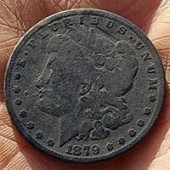
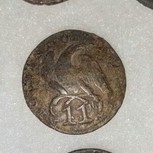
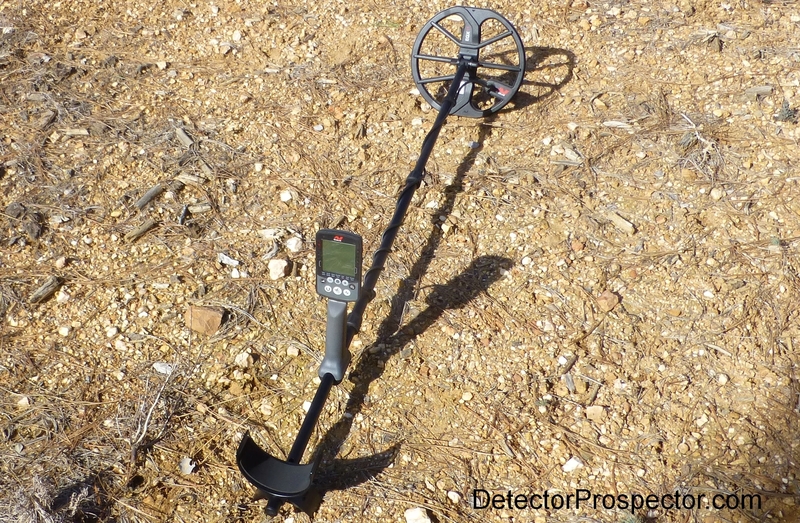
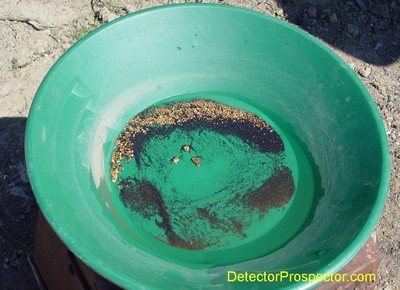
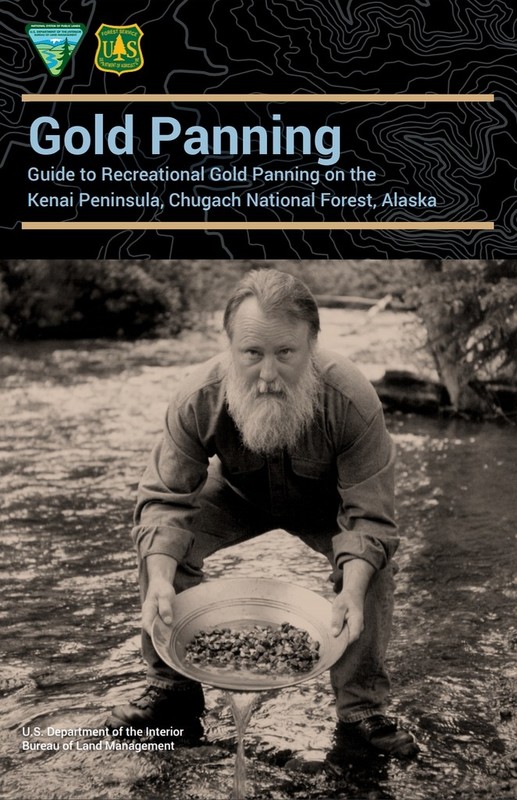
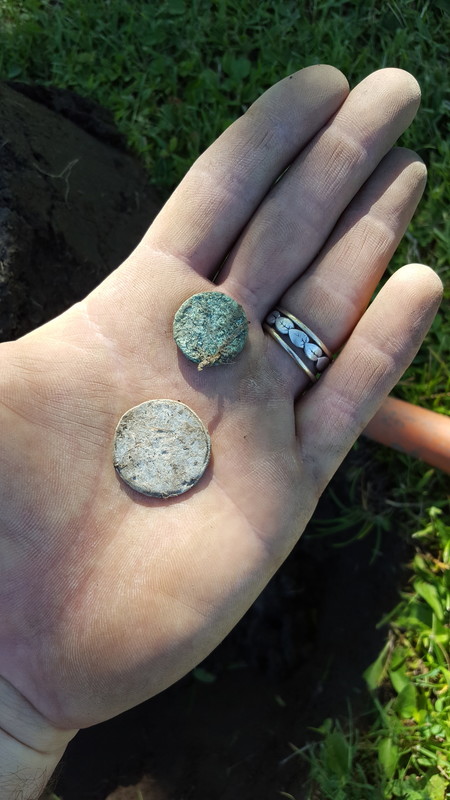
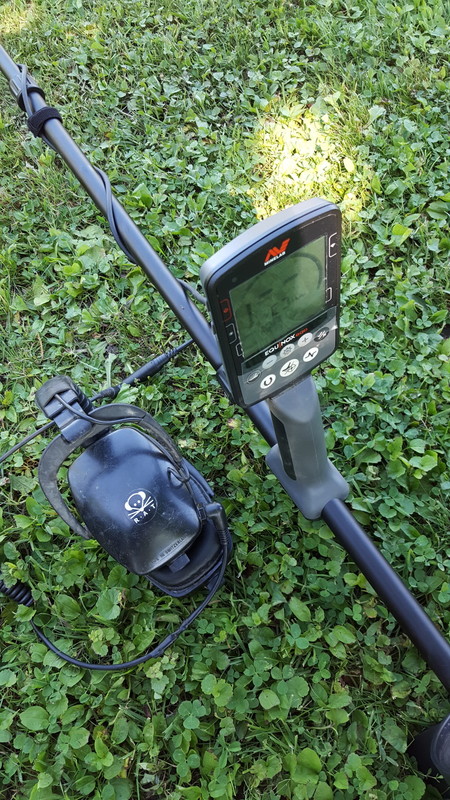
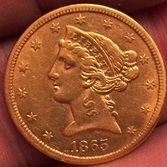
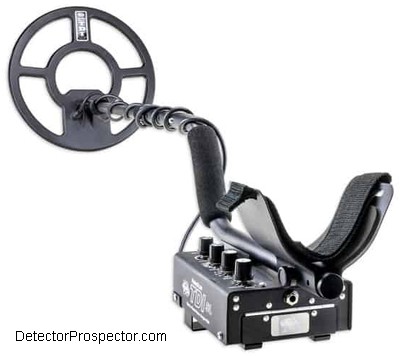






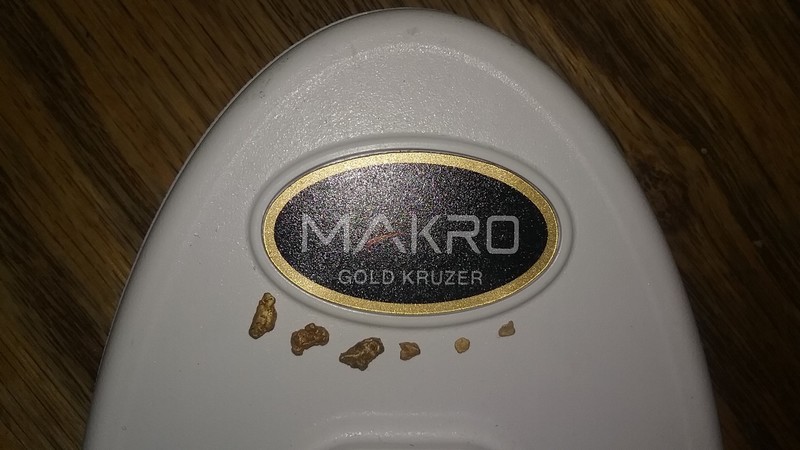
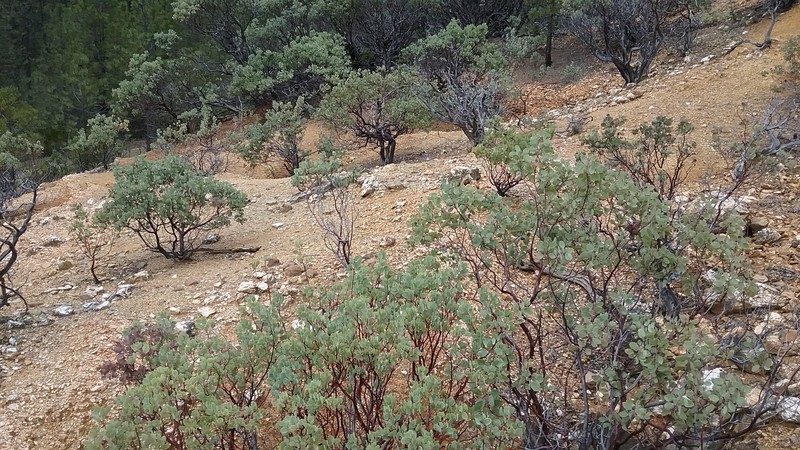

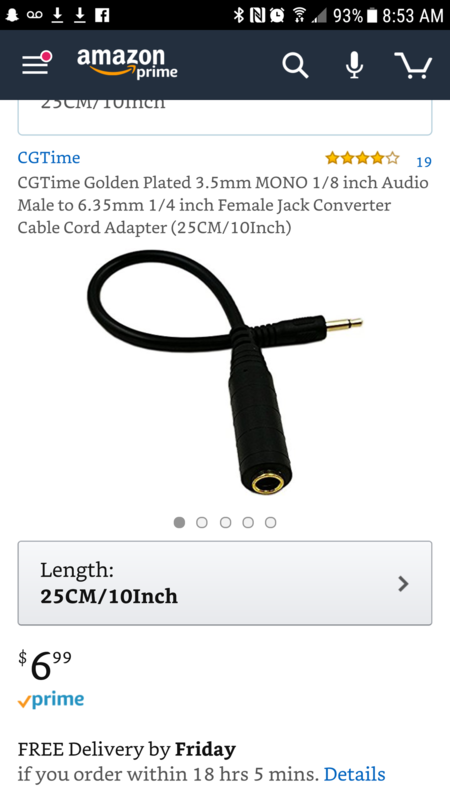
.thumb.jpg.a9604472c3cce6d83a8d8fcc887e33bc.jpg)

